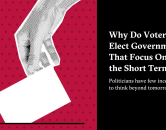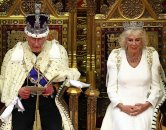Source Feed: National Post
Author: Stewart Lewis
Publication Date: May 2, 2025 - 18:17
A special byelection: What's involved in an MP stepping aside for a federal leader
May 2, 2025
Alberta MP Damien Kurek is stepping aside to allow the Conservative Party Leader Pierre Poilievre to run in a byelection for the Battle River–Crowfoot riding. The move comes after Poilievre lost his Ottawa-area seat in this week’s general election.
The Battle River–Crowfoot seat is considered one of the
safest Conservative ridings in the country
, making it a strategic choice for a leader’s return. It’s not the first time a party leader has gained entry to the House of Commons this way.
The practice of an MP resigning to create a vacancy for a party leader generally occurs only when a major party leader does not hold a seat in the House of Commons after an election or leadership change. It usually follows an unexpected loss during an election or a leadership change outside of a general election cycle.
What is a federal byelection?
A federal byelection is
a special election
held in a single riding to fill a vacancy in the House of Commons that occurs between general elections.
Vacancies can arise when a sitting Member of Parliament (MP)
dies, resigns, or becomes ineligible
to serve for another reason, such as accepting a salaried position in the civil service.
The
process begins when
the Speaker of the House of Commons notifies the Chief Electoral Officer of the vacancy. The governor general acting on the advice of the prime minister and Cabinet then sets the date for the byelection, which must be at least 36 days after the writ is issued and no more than 50 days later.
If a vacancy occurs within nine months of a scheduled general election, no byelection is called and the seat remains vacant until the general election.
Byelections follow similar rules to general elections: political parties nominate candidates, campaigns are held, and eligible voters in the affected riding cast ballots to choose their new MP.
Why would an MP vacate his or her seat?
Most MPs who leave do so for reasons unrelated to accommodating a leader.
An MP may
resign at any time
by submitting a signed declaration of resignation, either by making a statement on the floor of the House of Commons or by delivering the declaration to the Speaker of the House.
If the Speaker is absent or there is no Speaker, the MP can deliver the signed resignation to any two Members of Parliament, who then inform the Chief Electoral Officer. Then a writ for a byelection is issued.
An MP cannot resign if their election is being contested or until the period for contesting the election has expired.
The government is expected to call a byelection, with the campaign period lasting at least 36 days. The earliest a byelection can be called is 11 days after the resignation.
What happens after an MP resigns?
Once an MP officially resigns, they immediately cease to be a Member of Parliament and
lose all associated rights and privileges
, including the ability to participate in debates, vote, or serve on committees. They no longer receive an MP’s salary, benefits, or access to parliamentary resources.
The riding is left without direct representation in the House of Commons until a new MP is elected in the byelection. Constituents may experience a gap in representation, although the outgoing MP may continue to assist informally until the byelection occurs.
Stepping aside can be seen as a loyal act to the party, potentially leading to future political opportunities, such as appointments
or future nominations
. However, there is no guarantee of re-nomination if the MP plans to return in a future election.
What is the process for stepping aside to let a party leader run?
There are
no special legal or parliamentary rules
for an MP stepping aside specifically to allow a party leader to run in his/her seat. The process is the same as any other resignation, though the decision is often strategically coordinated within the party.
Here’s how it works:
- An MP voluntarily resigns, creating a vacancy.
- The party leader then runs as the party’s candidate in the resulting byelection.
- This is typically done in a “safe seat” to maximize the leader’s chances of winning.
- The government is expected to call a byelection promptly. (In this instance, Prime Minister Mark Carney has indicated he will do this.)
During World War II, the United States was desperate to develop the nuclear bomb ahead of Germany and maintain a technological advantage. To do so, they needed to produce plutonium, and lots of it. They would produce that plutonium at a site in Hanford, Washington, due to its proximity to the Columbia River and its distance from people, given the concern over an accidental explosion. The plutonium manufactured there would be used in the first nuclear bomb ever detonated. Over the following forty years, the site would produce two-thirds of the plutonium in the US nuclear arsenal.
As...
May 3, 2025 - 06:30 | Nicholas Chesterley | Walrus
When Simon McKay’s high-school guidance counsellor told him about a new class where students learn skilled trades by building a house from the ground up, which is then donated to a member of a nearby First Nation, the teenager was eager to enroll.By his own admission, sitting at a desk while a teacher lectures from the blackboard has never been the way the 18-year-old learns best, and so the new class had an instant appeal.
May 3, 2025 - 06:30 | Dave McGinn | The Globe and Mail
King Charles will visit Canada to deliver the throne speech on May 27. This will be the first time a reigning monarch delivers the speech in Canada since 1977.
The visit will mark the King’s 20th trip to Canada. The last visit was in May 2022. Queen Camilla will also be in attendance.
According to the Government of...
May 3, 2025 - 06:00 | National Post | National Post



Comments
Be the first to comment